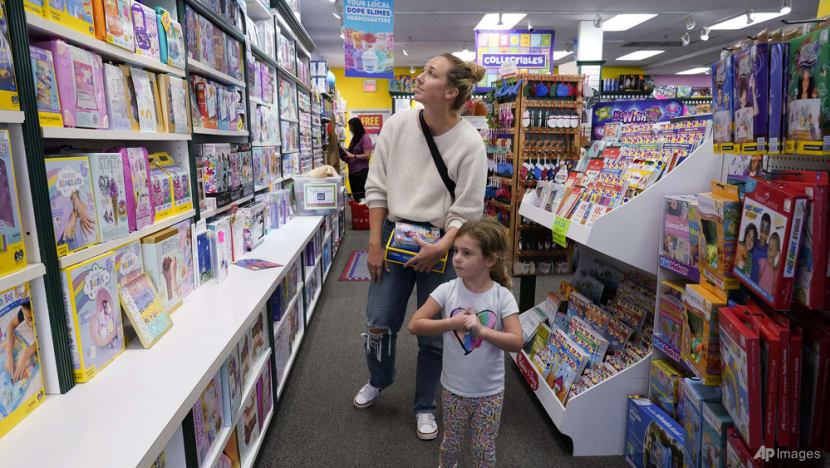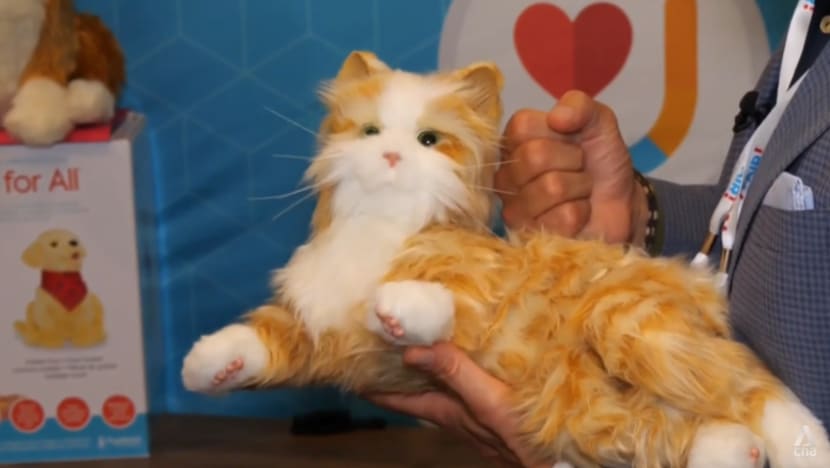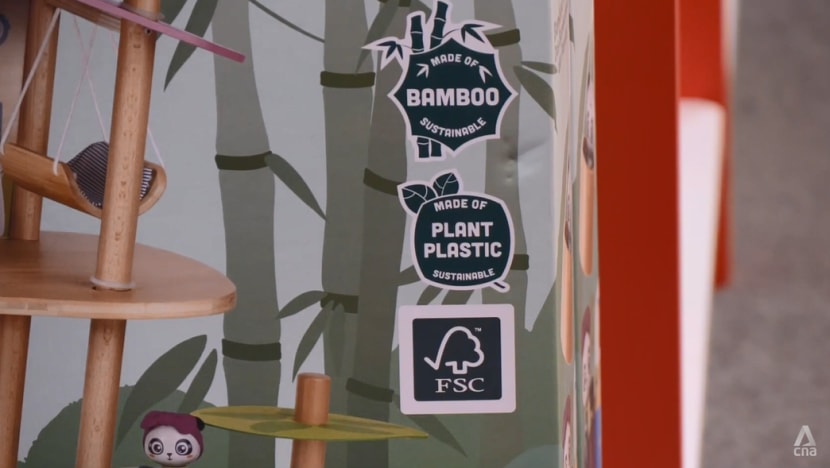US toymakers play up more educational and sustainable products to price-savvy parents
Apart from hunting for the best deals, shoppers are also looking at toys that teach and stimulate, from companies that pledge social responsibility in their products.


This audio is generated by an AI tool.
NEW YORK: As the year-end festive gift-giving season nears, parents across the United States are getting ready to splurge on toys for children.
But as inflation remains stubbornly high and price pressures continue to eat into the public’s spending power, shoppers are getting more savvy in their purchases.
Apart from hunting for the best deals, they are also looking at toys that teach and stimulate, from companies that pledge social responsibility in their products.
To match such expectations, toymakers are developing merchandise with more price-aware shoppers in mind, as they try to deliver options that fit every budget, industry experts said.
HUNTING FOR THE BEST BARGAINS
At the annual New York City Toy Fair earlier this month - the largest of its kind in the Western Hemisphere - observers said the industry is adapting to help shoppers stretch their wallets.
“Tighter budgets are definitely something toymakers have put into consideration,” said Ms Isabel Carrion, senior director of digital communications at Toy Association, the trade association for the US toy industry.
“The average price of a toy in the US is around US$12. So while parents might be buying less toys, there are still a lot out there to fit any pocket.”
Mr James Zahn, editor-in-chief of trade magazine The Toy Book, said some toymakers have managed to bring costs down recently. He showed CNA a digital pet toy that players can touch, feel and interact with, which is retailing at US$30.

“I would say if this came out 18 months ago, it would have been closer to US$44.99 … so (the industry is) very much changing the way things are developed from the get-go of how (they) can get the prices down.”
A toy store in Brooklyn said imported and heavier toys are particularly susceptible to price pressures. For instance, a set of wooden chess and checkers games costs around 10 to 25 per cent more today compared to a few years ago.
PARENTS WANT MORE USEFUL TOYS
Aside from the price, today’s parents are also looking for more educational and stimulating toys for their children.
The trade association said a major trend driving sales is toys that encourage self-care and social connection.
At this year’s Toy Fair, many sellers peddled products with a learning edge, such as encouraging the development of social skills or embracing diversity.
One such vendor was In Kidz, a firm which creates children’s play products that focus on learning about different cultures.
Its founder, adolescent psychiatrist Dr Zabina Bhasin, told CNA that multiculturalism starts in the playroom.
“There’s actually a science behind this. If we teach children from as early as three years old, you will see a change in them and (their behaviour) towards other people by the time they hit middle school,” she said.
“You actually see a decrease in making fun of one another, bullying, racial disparities, racial prejudices.”
TOYS THAT STRENGTHEN MENTAL HEALTH
There is also a growing demand for toys which promote mental, emotional and social health.
According to the Toy Association, 79 per cent of US parents view play as an important form of self-care. This includes easing anxiety and reducing stress.

Such statistics have pushed toymakers to prove their games and gadgets are more than just gimmicks, and stretch the scope of play to new limits.
“We have seen in the past six or seven years, the explosion of sensory and fidget toys, either hardline toys that crackle and pop and snap, or soft, squishy things. It reflects the needs of society,” said Mr Aaron Muderick.
He is the founder of Crazy Aaron’s Thinking Putty, a stretchy toy he said was created with the aim of helping not just children, but also adults, focus and cope with stress and anxiety.
TOYS ARE NOT JUST FOR KIDS
It is no surprise that businesses are also targeting older age groups, with the so-called “kidult” market expanding at a rapid rate.
Market research firm NPD Group found that almost a quarter of all toys sold from June 2021 to June 2022 were purchased for those above the age of 12.
Some companies have taken it even further.
Ageless Innovation, a firm that produces robotic therapy toy pets, said its products are designed to bring joy, play, comfort and companionship into the lives of seniors.

The company’s co-founder and CEO Ted Fischer said the toy pets can help alleviate loneliness and cognitive decline, and aid those with Alzheimer's or dementia in interacting with their caregivers and loved ones.
“The opportunity to solve problems and deal with issues that older adults are facing by using play as the intermediary is a complete game-changer,” said Mr Fischer.
PAYING MORE FOR SUSTAINABILITY
However, it is not all good news for the industry, which has historically been criticised for its reliance on fossil fuels and environmentally harmful practices.
About 90 per cent of toys worldwide are still made from plastic, and 80 per cent eventually end up in landfills, according to the Yale Environmental Review.
Manufacturers are scrambling to think outside the box to produce more climate responsible toys by using alternative material such as bamboo and plant-based plastics.
Stapelstein is one such toymaker using a new eco-friendly plastic to produce bright, stackable, recyclable domes designed for multifunctional and long-term use.
“(This material) is called expanded polypropylene. It’s pure polypropylene and by expanding it we save 96 per cent of material per volume,” said the company’s founder Stephan Schenk.
While the toy is planet-friendly, it is not cheap - each set will set parents back almost US$200.
Meanwhile, some businesses are working to reduce their impact in other ways.
Goki America, which makes wooden toys, is replenishing forests to compensate for the raw material it uses.
“We’ve been planting trees for the last 20 years … we have planted 450,000 trees in Germany to reimburse what we take away to build the toys,” said the firm’s president Thomas Bellizzi.

Such environmentally conscious products have a market. A study from researchers The Insights Family found many parents are willing to spend more on eco-friendly products, with two-thirds of those surveyed saying they take active steps to purchase more sustainably.
TOYS STILL IN HUGE DEMAND
The US toy sector cashed in just over US$29 billion in sales last year, a 0.2 per cent decline year-on-year.
Analysts expect similar returns this year but warn that recent metrics do not paint the full picture – business still looks rosy. The slight dip is due to a toy sales boom during the COVID-19 pandemic, when families were cooped up at home, they said.
“If we compare where we are at in 2023 to where the world was at in 2019, the toy business is actually still up. The pandemic skewed the numbers, when people were buying excessively,” said Mr Zahn.
Shoppers may be increasingly price conscious but industry players are confident the sector will weather the recent challenging economic spell.
Experts said a toy’s ability to boost spirits during tough times makes the sector resilient to recession.














